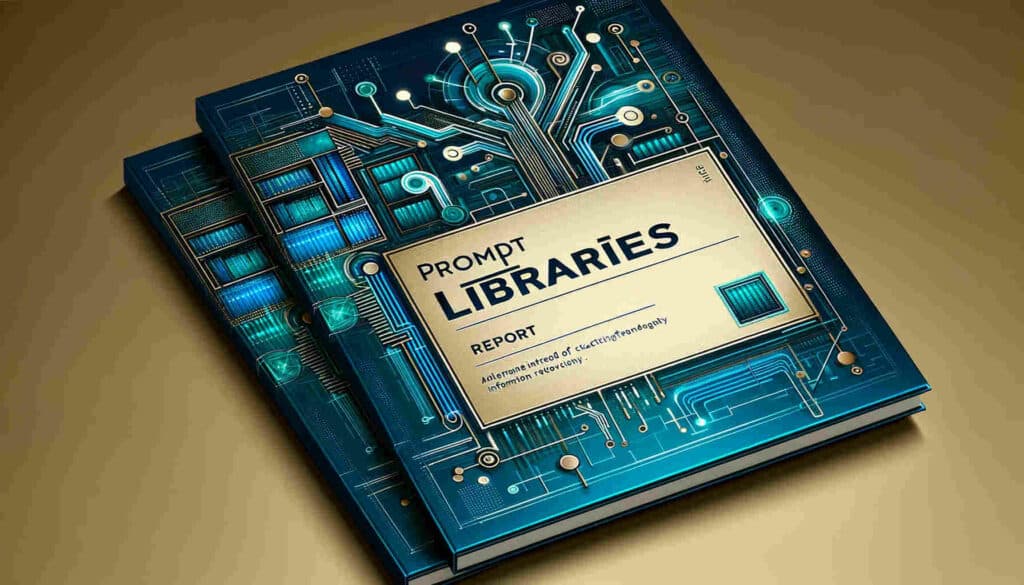Top 7 Prompt Libraries for Unlimited Prompts
Prompt libraries have become a game changer in today’s digital landscape, especially for busy individuals like myself. Whether you’re a content creator, marketer, or just someone who enjoys exploring AI’s capabilities, utilizing prompt libraries can save you time and enhance your creative process. After extensive research and experimentation, I’ve compiled a list of seven prompt libraries that have proven to be invaluable. Each of these resources offers free prompts that can be easily stored and reused across various AI platforms like ChatGPT or Claude.
Let’s dive into these libraries, explore their unique features, and discover how they can streamline your creative endeavors. This guide is brought to you by Nid AI, a tool I highly recommend for generating videos from text prompts. More on that later as we continue discussing prompt libraries!
We strongly recommend that you check out our guide on how to take advantage of AI in today’s passive income economy.
Table of Contents
1. Google AI Studio
The first prompt library I want to highlight is from Google, and it can be found at Google AI Studio. Although it’s primarily aimed at developers, I’ve found it immensely useful as a business owner. The library features a variety of prompts tailored for different applications. For example, there’s a specific prompt for marketing that simply asks you to provide an image of a product and its target audience.
The system then generates an engaging marketing description based on the inputs provided. One of the standout features of this library is that you can use it without needing to interact with any other AI model. The process is straightforward: upload an image from your device or Google Drive, specify your target audience with a single word, and hit “Run.” The output is a concise marketing description that you can immediately utilize.
This functionality not only simplifies the task of creating marketing content but also allows for quick iterations. If you’re looking to save time on marketing tasks, the Google AI Studio prompt library is a fantastic resource. The prompts cater to a wide array of use cases, ensuring that you have ample options at your disposal.
2. Hero Page
Next up is the Hero Page prompt library. This platform houses an impressive collection of practical prompts, particularly beneficial for business owners and marketers. It offers various AI prompts designed for content creation, design, and media, making it an essential tool for anyone in these fields.
One feature I love about this library is its emphasis on practical application. For instance, when you explore the prompts, you’ll often find placeholders that allow you to customize your inputs easily. Let’s say you want to analyze the repetitive tasks faced by thumbnail designers. You can input your specific parameters directly into the prompt, enabling tailored outputs that meet your needs.
Moreover, this library isn’t limited to large language models. It includes prompts for platforms like MidJourney, which allows users to generate visuals based on text inputs. This versatility means that whether you’re looking for written content or visual designs, Hero Page has you covered. It’s a highly effective resource for maximizing your creative potential.
3. Nid AI 2.0
Moving on, I want to share my experience with Nid AI 2.0, a platform I’ve partnered with for some time. This tool has undergone significant upgrades and can transform any text prompt into a full-fledged video. Imagine the possibilities! You simply enter your prompt, choose your audience, and with a click, the system generates a video.
For instance, I once created a one-minute video exploring the rise and fall of the Roman Empire. The process was seamless. After generating the video, I could further customize it by changing the language or voiceover to match my preferences. If you want to have your own voice narrating the content, you can upload a 30-second sample, and the system will clone your voice for the video.
This capability is not only impressive but also practical for content creators looking to produce videos quickly and efficiently. Additionally, there’s a subscription option that allows you to remove watermarks and download higher-quality outputs. Overall, Nid AI 2.0 stands out as a robust tool for anyone aiming to create video content effortlessly.
4. Snack Prompt
The next library I’d like to discuss is SnackPrompt.com. While some prompts here are paid, I recommend focusing on the free options, which are equally effective. One standout feature is the user ratings, which help identify the most effective prompts. For instance, there’s a prompt for book creation that allows you to enter a topic and generates a comprehensive outline, including 11 different chapters.
After trying it out, I was pleasantly surprised by the quality of the output. The system produced a book title and structured chapters, guiding me through the writing process. However, it’s essential to note that the tool pauses after a certain word limit and prompts you to continue, making it easy to manage long-form content.
This functionality is particularly beneficial for authors and content creators who need to develop extensive materials without getting overwhelmed. Snack Prompt proves that high-quality prompts don’t always have to come at a premium, making it a fantastic resource for everyone.
5. OpenAI’s Platform
I’d be remiss not to mention OpenAI’s platform, which has its own collection of prompts. This library was one of the first I explored, offering various straightforward prompts designed primarily for developers. While they may not be as comprehensive as others on this list, they still hold value, especially for those who appreciate simplicity.
For instance, a prompt for creating a single-page website can easily guide you through the process. While these prompts may lack the depth of more advanced libraries, they serve as a solid foundation for beginners and those who prefer minimalistic approaches.
Even though it’s primarily tailored for developers, I found some of these prompts useful for my own projects. This highlights that even the simplest tools can still provide valuable assistance in your creative journey.
6. Anthropic Claude Prompt Library
Next, I want to talk about the Anthropic Claude prompt library, which offers prompts similar to those found in ChatGPT and OpenAI’s collections. This library has quickly become one of my go-to resources due to its depth and usability. The prompts are well-structured, catering to a range of applications, from building custom chatbots to generating creative content.
One example is the “Website Wizard” prompt, which guides you in creating an effective online presence. The system prompts are not only user-friendly but also comprehensive, making it easier to obtain the results you’re looking for. This is particularly beneficial for marketers and creatives who want to streamline their workflow.
By utilizing these prompts, I’ve managed to save significant time and effort while still producing high-quality outputs. If you’re involved in content creation or digital marketing, the Anthropic Claude prompt library is a must-try resource.
7. Role Prompting on GitHub
The final library on my list is found on GitHub and focuses on role prompting. This collection of prompts allows you to specify the role you want the AI to play, such as acting as a travel guide or English translator. I found this approach to be incredibly useful, especially when I was new to prompting.
Role prompting allows for more detailed and specific outputs, making it easier to achieve the results you want. The extensive range of examples available on this platform serves as a great starting point for anyone looking to enhance their prompting skills.
This library is particularly beneficial for those who are just beginning their journey with AI tools. By experimenting with different roles, you can discover how to craft more effective prompts that yield better results.
8. Google Cloud Vertex AI
Finally, we have Google Cloud’s Vertex AI, which features a powerful prompt gallery designed for professionals. This platform is particularly geared toward developers, but it also provides valuable resources for everyday users like me. The prompts are well-structured and come with detailed instructions, making it easy to understand how to use them effectively.
One aspect I appreciate is the inclusion of example inputs and outputs, which help clarify the intended use of each prompt. This feature can significantly enhance the quality of the results you receive, as it guides the AI in understanding what you’re looking for.
Although Vertex AI may seem more complex than other libraries, it’s well worth exploring for anyone serious about using AI in their projects. The depth and professionalism of the prompts available here make it a valuable resource in my toolkit.
Conclusion
In conclusion, having access to a variety of prompt libraries can dramatically enhance your efficiency and creativity in any project you undertake. From Google AI Studio’s versatile prompts to Nid AI 2.0’s video generation capabilities, each of these libraries offers unique features that cater to different needs and preferences.
I encourage you to explore these resources and experiment with the prompts they provide. You might discover new ways to streamline your creative processes and enhance your outputs. With tools like these at your disposal, the possibilities are virtually limitless.
Thanks for joining me on this journey through the top prompt libraries. I hope you find them as helpful as I have. Happy prompting!

We strongly recommend that you check out our guide on how to take advantage of AI in today’s passive income economy.




